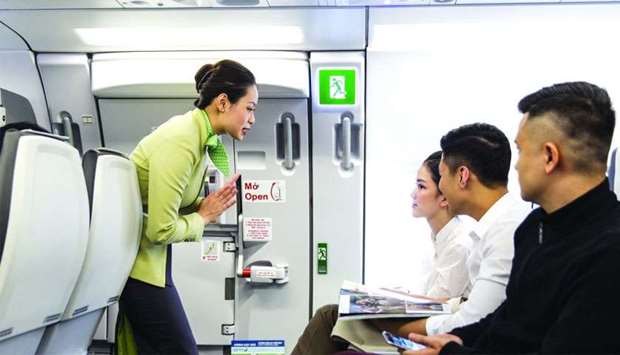Flying continues to be the safest form of long distance travel the world has ever known.
Last year some 4.3bn passengers flew safely on 46.1mn flights, data provided by International Air Transport Association shows.
Based on the data, on average, a passenger could take a flight every day for 241 years before experiencing an accident with one fatality on board!
The industry suffered 523 passenger or crew deaths as a result of 11 fatal accidents in 2018, compared to an average of 8.8 fatal accidents and 234 fatalities in the preceding five-year period, and a record low of just six accidents causing 19 passenger/crew deaths in 2017.
Fatal accidents have indeed fallen every decade since the 1950s, a significant achievement given the massive growth in air travel since then.
Statistically, one has more chance of being killed riding a bicycle or even by lightning. The chances of dying in an air crash in developed or emerging markets are estimated to be one in 29mn.
But flying has become so safe that many travellers often take it for granted. Travellers tend to remember safety only when some issues crop up or a crash occurs.
Over the course of several decades, regulators and industry worked together to significantly reduce the risk of accidents and to improve airplane design, maintenance, training, and procedures.
But accidents, safety issues and emergencies can still happen.
The 2018 Airline Safety Performance registered the all accident rate (measured in accidents per 1mn flights) at 1.35, equal to one accident for every 740,000 flights.
Although this was an improvement over the all accident rate of 1.79 for the previous five-year period (2013-2017), it was a decline compared to 2017’s record performance of 1.11, IATA says.
Major jet accidents, measured in jet hull losses per 1mn flights, were registered at 0.19, an increase on 0.12 in 2017, the global body of airlines said in its latest safety report. However, this was an improvement of the previous five-year period of 0.29.
Although aviation is seen as a very safe industry today, recent accidents have shown that vulnerabilities still exist.
In particular, events do occur, which were not previously foreseen, the so-called ‘game-changers’ being crashes involving Malaysian Airlines MH370, and MH17 and Germanwings 9525 a few years ago, and more recently, the Lion Air tragedy in October last year.
Various stakeholders are now working on a project to totally eliminate midair collisions by 2020. It may seem an unlikely event that two airplanes would collide while flying, but history marks quite a few of these tragic events.
In recent years, however, thanks to technological advancements, midair collisions have become increasingly rare, especially for jets — and by next year, they are expected to reduce to near zero.
By then, nearly all aircraft will be mandated to be equipped with ADS-B (Automatic Dependent Surveillance-Broadcast) technology. The ADS-B devices, which can be installed on any aircraft, from the biggest airliner to the smallest private plane — provide signals that enable pilots to track all other aircraft in their vicinity on a screen in their cockpit, regardless of weather or visibility.
Another major initiative to ensure good safety performance in the commercial airline industry is a data-driven approach to identifying current and emerging risks.
Dubbed IATA’s Global Aviation Data Management program, GADM is the world’s most diverse aviation data exchange initiative of its kind. Data captured in GADM databases comprises accident and incident reports, ground damage occurrences and flight data from more than 470 different industry participants.
“Through GADM, we are using information from the more than 100,000 flights that operate safely every day to identify and address operational issues before they can become potential risks,” points out IATA director-general and CEO Alexandre de Juniac.
The improvement in airline safety is down to a combination of several factors, although the introduction of the jet engine in the 1950s stands out as a major development. Jet engines reportedly provide a level of safety and reliability unmatched by the earlier piston engines.
The introduction of digital instruments — known as the ‘glass cockpit’ in the 1970s — and the advent of fly-by-wire technology in the 1980s are also notable achievements, driving safety improvements to a great extent.
Improvements in sensors, navigation equipment and air traffic control technology, such as anti-collision control systems, have also played a key role in enhancing safety.
Undoubtedly, technology has made air travel safer. That said, aviation analysts have expressed fears that the safety paradigm could be compromised, when there are economic and performance pressures on the aviation industry.
They argue that cost-cutting exercises should not be at the expense of safety. Because, safety is something non-negotiable.
As they say, when it comes to safety, there is no competition! That’s because the entire industry shares the same goal — zero accidents.
* Pratap John is Business Editor at Gulf Times.


